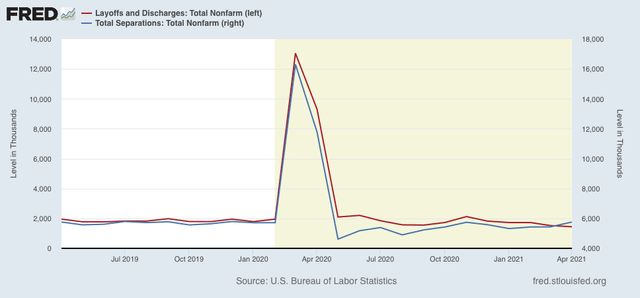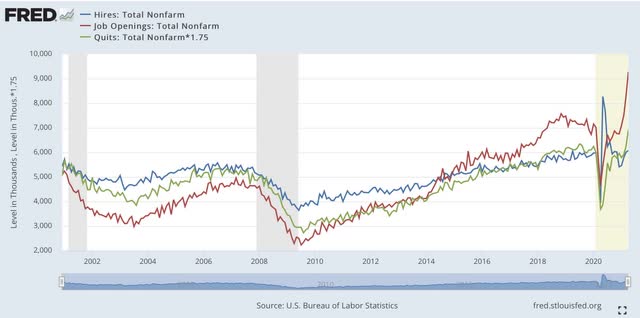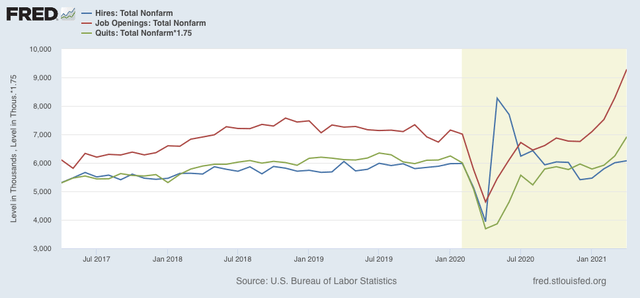- by New Deal democrat
This morning’s JOLTS report for April confirmed anecdotal evidence that there have been a huge amount of unfilled job openings, and a comparatively weak level of actual hiring. Job openings soared to a level over 20% higher than at any point in the series before March. Meanwhile actual hires are less than 1% above their pre-pandemic high. Voluntary quits increased to an all-time high, while layoffs declined to a new all-time low. Total separations also increased.
This report has only a 20 year history, and so includes only two prior recoveries. In those recoveries:
- first, layoffs declined
- second, hiring rose
- third, job openings rose and voluntary quits increased, close to simultaneously
The recovery from the worst of the pandemic almost one year ago at first followed this script, but the winter surge, which led to a few month of flat, or worse, jobs reports, disrupted that trend, and now there is yet another new pattern.
Let’s start out with layoffs and discharges (red) and total separations (blue), showing that these have followed their past patterns, as layoffs rapidly declined to a normal rate after last March and April. As noted above, this month’s report made yet another new series low:

Next, here is the series-long record of hiring (blue), quits (green, *1.75 for scale), and job openings (red):

Here is the zoomed-in look at the past several years:

What has been different this time around is that, after rapidly improving, hires declined again until bottoming in December and January, and have risen only tepidly since.
Two months ago I flagged the issue of whether “hires reassert themselves, as in the past two recoveries, or whether openings without actual hiring continue to soar as they did starting in 2015.” In March both happened, but in April, as I anticipated given the relatively subpar April employment report, the increase in actual hires is definitely lackluster.
Yesterday I read a news article (sorry, didn’t bookmark it) that appeared to anticipate all of the trends we saw in this report. Of people who lost jobs early in the pandemic, many of the older workers have chosen simply to retire (hence the record in voluntary quits). Others cited, in roughly equal percentages, (1) problems with child care, (2) job offers unattractive compared with continued enhanced unemployment benefits, and (3) that the jobs on offer paid significantly less than the jobs they had before the pandemic.
It is pretty obvious there is a disconnect in the jobs market, and all 3 of the above items are going to have to be addressed in some fashion.